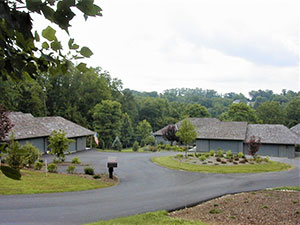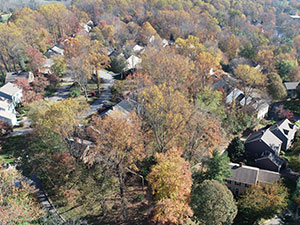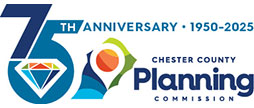Design Elements — Orienting Homes in Distinct "Neighborhoods"
One of the many benefits of clustering housing units is that it can provide for an enhanced sense of community over conventional development. Homes that are located closer to streets and sidewalks and closer to one another can develop more of a neighborhood feel. Orienting units to face one another or clustering units around a shared central green can enhance the social quality of the neighborhood.
Ordinance Considerations
While this design feature may not be possible in every conservation subdivision, ordinances can suggest units be clustered into "neighborhoods", oriented around a central green, etc. The inclusion of sidewalks and paths in cluster developments can further enhance neighborhood vitality and connectivity.
Good Examples

The homes in the Southridge development in Kennett Township are oriented around cul-de-sacs, creating a mini-neighborhood around each cul-de-sac.

In Deerfield Knoll, homes were laid out around a grass eyebrow to create the feel of a neighborhood.

The townhouses in Brandywine at Thornbury are designed in a traditional grid pattern creating neighborhoods.

